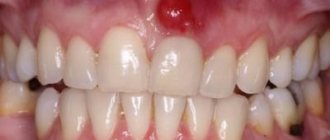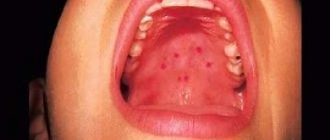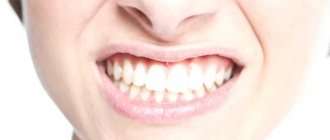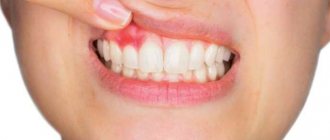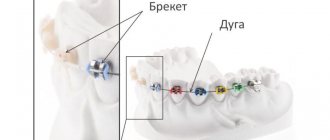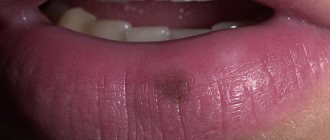Why do skin blisters with fluid occur?
Very often you can hear the following question: “Water blisters, what are they?”
It all depends on the reason for their appearance. To determine the causes of blistering, the accompanying symptoms are very important. Depending on them, it is possible to identify a disease or some external factor that provokes the appearance of watery capsules on the body.
| Cause | Symptoms |
| Burn | Usually, if a blister appears on the skin after sunbathing for a long time, then the question of the cause of this phenomenon does not arise. Basically, bubbles with liquid begin to appear after 5-8 hours from the moment of exposure to the sun. Accompanying symptoms are severe itching, heat and severe redness of the skin where the blisters form. |
| Chickenpox | This disease generally manifests itself only in childhood, but there are exceptions. In such a situation, bubbles can form on any part of the body. Initially they are very small in size, but over time they fill with white liquid (pus) and increase in size. In this case, the formation of blisters is accompanied by severe, continuous itching. Over time, a crust can be observed on top of the bubbles. In the first days of the appearance of bubbles, body temperature increases and chills are present. |
| Herpes | A viral infection manifests itself as blisters combined with a severe burning sensation in the affected areas. The initial size of the bubbles is very small, but over time you can detect their transformation into ulcers. |
| Shingles | This disease is also caused by a viral infection. In this case, an increase in temperature, which persists for several days, and itching are the only symptoms. Watery blisters are white, dull and appear all over the body. |
| Allergy | Redness of the skin and itchy sensations in the skin, along with the sudden appearance of blisters, which very quickly increase in number. |
| Fungus | One of the manifestations of skin damage by a fungus. Water blisters appear in the same places where there were other symptoms of fungus. If these have not been observed up to this point, then this indicates an advanced stage of development of the disease, which had not manifested itself until that moment. |
Important: if the cause of the appearance of bubbles with liquid is a viral infection, then treatment should be carried out by a specialist.
When blisters appear, itching always begins on the skin, especially in the affected areas.
The desire to scratch such places is understandable, but you shouldn’t do it.
The reason for this is the danger of the spread of viruses and bacteria on the skin, as well as on other people.
Scratching can damage the thin layer of skin that covers the blister.
Under the skin there is a liquid that may contain harmful cells.
Important: Any other infection can get into an open wound after breaking the integrity of the skin, which will worsen the situation.
Causes of blisters
There are 3 series of reasons for their occurrence:
- mechanical effect on the skin;
- allergic reaction of the body;
- disease.
Mechanical impact
Occur due to constant or prolonged mechanical impact on the skin - friction or burns:
- Sunburn. Bubbles appear 4-6 hours after prolonged exposure to direct sunlight.
They take the form of fairly large cones filled with a clear, watery liquid. Accompanied by a burning sensation and pain. - Thermal burn. Burn from a hot spring (water, fire, steam, other hot substances and objects). Such blisters immediately appear on the skin after contact with a hot object, accompanied by pain and redness. To prevent complications, the burned area must be immediately immersed in cold water or held under running water and a clean bandage applied.
- Friction. Mechanical blisters caused by friction with tight clothing or shoes, as well as blisters on the palms that appear during labor (calluses) - friction with tools. They occur in places of friction with objects and have a single localization. After eliminating the mechanical irritant, they go away on their own and do not require special treatment. If purulent blisters (boils) appear, you should consult a doctor.
To treat “mechanical” blisters, you will need to eliminate the irritating factor and take antihistamines.
Allergy
Allergy blisters appear as a result of contact with various types of allergen, in places of contact with it. An allergy may be to:
- insect bites;
- household chemicals;
- Food;
- women's accessories metals and jewelry;
- decorative women's cosmetics;
- medical drugs,
- plants (eg nettle).
Such blisters look like small red dense tubercles, which are accompanied by a feeling of itching and a feeling of warmth in the localized area, and possible pain. They appear suddenly and are filled with cloudy liquid.
Their number varies from a single bump to a rash that covers the entire body. Allergic blisters from insect bites are distinguished by single formations with a red dot in the middle - the site of the bite.
Allergy blisters may appear along with hives, which is one of the symptoms of allergies, most often developing to food or medicine (sometimes to insect bites).
This video will tell you what to do if you are allergic to insect bites:
Such bubbles are elements with clear boundaries of various sizes. The tubercles have a dense texture, white or pink color, and are filled with liquid inside.
They appear very quickly and are very itchy.
Treatment of such blisters must be started immediately to avoid complications and progression of the rash, as well as to relieve itchy skin. The risk group for the appearance of such formations includes children; they are more often susceptible to allergies.
Treatment consists of eliminating the allergen and eliminating itching:
- taking antihistamines;
- applying compresses to relieve itching;
- the use of gels and ointments that have anti-edematous and anti-inflammatory effects.
In severe cases, the doctor prescribes additional medications.
Blisters in infectious diseases
Infectious blisters appear as a symptom of an infectious viral or bacterial disease. They appear on various parts of the skin and even on the human mucosa, depending on the disease.
Such blisters go away on their own after the disease is eliminated and do not require treatment. You can use gels and ointments that relieve itching and eliminate discomfort to alleviate the patient's condition.
Blisters occur as a result of the following infectious diseases:
- Chickenpox. It appears as small pink spots that itch and itch, and after a while they turn into bubbles with liquid, burst and become crusty. Bubbles are located on the skin, on the mucous membrane, and cover the entire body. Measles and rubella can also be accompanied by blisters of different sizes and different densities (from watery, dense to purulent).
- Herpes - blisters on the mucous membranes of the mouth and tongue, lips, and genitals, are painful. Filled with a clear liquid that becomes cloudy as the bubbles increase in size. Later they burst and in their place dark red crusts form.
- Vesicular fungus - most often appears on the hands and feet. With this disease, weeping rashes and blisters filled with fluid appear on the skin. It is treated externally and locally.
- Scabies - begins with small blisters between the fingers, which over time spread to the palms, stomach, legs and other parts of the body. The disease requires immediate consultation with a doctor and monitoring by a dermatologist.
- Streptoderma is a skin infectious disease that manifests itself as small blisters with a cloudy liquid on the face, hands, and legs, which quickly increase (up to 1 cm in diameter) and then burst, leaving brownish crusts behind.
An itching sensation occurs after the formation of a crust. In another form of streptoderma, blisters can reach a size of more than 2 cm. - Shingles is caused by the chickenpox virus. After treatment for chickenpox, the virus remains in the body and sometimes makes itself known with a rash on one side of the body, turning into blisters with a clear liquid that becomes cloudy over time. Accompanied by pain.
- Follicular tonsillitis is an inflammation of the tonsils, accompanied by severe pain in the throat and the appearance of blisters on the mucous membrane of the throat and oral cavity. Requires a visit to a doctor.
What is shingles, watch in this video:
Blisters in other diseases
Blisters may also indicate:
- Hormonal disorders - blisters or pimples appear on the face, back, chest, in most cases during adolescence or in women after childbirth.
- Disorders of the gastrointestinal tract - small bubbles located on the hands and other parts of the body indicate a metabolic disorder.
- Autoimmune diseases accompanied by urticaria.
Hives immediately flare up not only against the background of allergies. It can also accompany some immune diseases (for example, rheumatoid arthritis, diabetes mellitus, thyroiditis), gastrointestinal diseases (gastritis, colitis and others), infectious diseases (urinary tract infections, gynecological infections, herpes, fungus, shingles, etc.), oncological diseases. Blisters appear in places where the rash has rapidly developed before and can reach a size of 8-10 cm. If you press on such a blister, it will disappear. They usually go away within a day.
Elimination of blisters that are a consequence of any disease should begin with the treatment of this disease.
Water spots on the body
Water spots on the body are a fairly common phenomenon among people of all ages. They happen to everyone at one time or another, and there are many reasons for this. Fortunately, these unusual spots are easy to treat and usually go away quickly.
What do red water spots on the skin mean?
There are several possible causes for this type of rash. The most common are the following:
- friction burn;
- sunburn;
- exposure to heat;
- electrical burns;
- chickenpox;
- herpes;
- fungal skin infections;
- contact dermatitis (poison ivy, chemicals and other irritants).
While these are very common factors, they are not the only causes of water spots. Blisters can also be caused by skin conditions such as bullous dermatoses.
Water spots on hand
Water spots are composed of blood serum, excluding clotting agents and blood cells. When the body detects damage to the outer layer of skin, it sends blood to the area to heal and cool it.
Acting as a protective shield, the serum fills the wound and prevents further exposure to harmful factors.
These painful water bumps appear most often on the arms, but can also form anywhere.
Single spots may appear where the body needs healing. These spots come in different shapes, from round to oval. Small ones may look like frequent pimples, while large ones can be the size of a coin or larger, depending on the cause.
Red water spots on legs
Red water spots mainly affect the leg area. Proper treatment of the blister (or blister) is necessary to prevent pain or discomfort during the healing process.
For the most part, water spots do not require treatment. They will heal on their own in a few days or weeks, depending on the size and cause.
However, some things can slow down healing, such as infection and their deformation.
Especially if these are blisters from heat or burns. They tend to heal slowly. Although water bubbles may not be pleasant and detract from the overall beauty of the body, they actually keep the wound sterile.
And damage to the blister can increase the risk of infection and slow down the natural healing process.
The most common cause of red, watery spots on the legs is common calluses.
To prevent their occurrence, you must take some precautions:
- Wear the correct shoes. Shoes that are too big or too small can cause friction.
- Wear the right socks. Avoid wearing old thin socks as they will not provide you with enough protection. Socks should be made of lightweight cotton materials.
- If your feet sweat a lot, use a special foot deodorant.
Water spots on a child's body
Children are especially susceptible to developing a watery rash. The causes of its occurrence can be diseases and various burns:
- Measles.
- Various viral infections.
- Chicken pox.
- Herpes virus.
- Different types of dermatitis.
- Rubella.
The most common cause of blisters is chickenpox. In addition to watery pimples, there is a general weakness of the body and an increase in temperature.
In addition, such an unusual rash may indicate serious illnesses in the body, so if you notice any unusual rashes, seek help from a specialist.
Associated symptoms
Very rarely, rashes are not accompanied by additional symptoms. Most often, if watery blisters appear on the body, they will soon cause severe itching, burning or slight numbness. They are accompanied by changes in skin tone and structure. Burns and calluses do not increase in size and affect only the affected skin. After a few days they break out or dry out, and the pain gradually subsides. Under the bubble you can see new skin with a pinkish tint.
Contact dermatitis is accompanied by small blisters on the surface of the epidermis, which noticeably increase in size. After a few days, the rashes dry out, crust over and become smaller. With quick contact, a person may notice only slight redness and mild discomfort. If the sick person stays near the irritant for a long time, the spots affect large areas and turn into erosions.
Sakania Luiza Ruslanovna
Dermatovenerologist, cosmetologist, trichologist
Ask a Question
Allergic dermatitis and nervous rash with itching have similar symptoms to other pathologies, but there are still differences. Pimples are not filled with fluid; most often they are simply swelling spots. They cover the face, limbs, and chest. In advanced cases, almost the entire body turns red and itches.
Toxidermia will be indicated by urticaria, papules and pigmentation on the skin. The redness has clear boundaries and a red tint, sometimes dilated capillaries are noticeable. Pimples first cover the torso, then move to the limbs. The patient is concerned about moderate itching, chills, headache, and a slight increase in temperature. In severe cases, blisters on the body containing fluid burst, the temperature rises to 39 degrees, and fever develops.
The bacterial infection causes vesicular and pustular rashes throughout the body. Inside the blisters is pus or a viscous, cloudy liquid. The epidermis on the affected areas becomes covered with erosions, which subsequently dry out, and a crust remains in their place. Viruses (for example, chickenpox and herpes zoster) cause severe discomfort to a person. Such rashes on the body of a child and an adult quickly spread, itch and have a reddish tint. There is an infectious liquid inside them; you cannot burst the bubbles yourself. The patient notices chills, sleep disturbances, loss of appetite and a sharp increase in temperature. Herpes, unlike chickenpox, most often affects only one side, affecting the back, ribs and part of the abdomen (seen in the photo). Fungal infection contributes to the development of various types of mycosis. Lesions can be seen on the arms, legs, armpits, genital area and scalp. The diseases are accompanied by burning, itching, peeling of the dermis, the formation of plaque and small blisters on the surface.
Diseases with a rash on the labia
Dermatitis with pimples
Pimples with molluscum contagiosum
When talking about rashes, it would be useful to remember that the variety of elements is amazing. Their appearance is characteristic of each individual problem. You can't rely on self-diagnosis. Only a qualified specialist will figure out what it is and make the correct diagnosis.
Therefore, if the labia are swollen and itchy, or unpleasant discharge or rashes appear, you need to visit a gynecologist.
Let's take a closer look at the clinical manifestations of various pathologies.
| Pathology | Pathogen | Symptoms |
| Genital herpes | Herpes virus type 1 | Violation of general condition, possible increase in body temperature. After a few days, cloudy blisters appear on the labia. There is a burning sensation and discomfort in the area of the blisters on the genitals. Watery blisters burst to form ulcers. They scar within 14 days |
| Allergic contact dermatitis | There is no specific pathogen, but there is information about the suspected allergen: underwear, cosmetics, chemical agents | The skin of the genitals turns red and itches. The rash can be polymorphic from small spots to blisters. In case of infection, the elements transform into pustules |
| Condylomatosis | Human papillomavirus (HPV) | Genital condylomas are shapeless growths of the dermis. Flat condylomas are pedunculated growths pressed to the skin. Localization on the labia, in the vagina, around the rectum |
| Syphilis | Treponema pallidum | At different stages of the disease, different types of rash are observed. Primary syphilis is manifested by the so-called hard chancre on the small lip, on the large lip or near the rectum. This is a dense ulcer with smooth edges. On the eve of its formation, the patient is worried about general malaise and fever. Secondary syphilis has a variety of rashes (nodules, papules, small ulcers). These elements spread not only around the labia, but also in the internal organs |
| Thrush | Yeast-like fungi of the genus Candida | Abundant, curd-like, milky discharge from the genital slit. Itching, discomfort in the perineum. Painful sexual intercourse. Red small spots on the skin of the labia. Pustules or blisters with thrush indicate the addition of bacterial inflammation |
| Molluscum contagiosum | Molluscum contagiosum virus | First, small dense nodules appear. Over time, they merge into massive groups. It resembles bright red plaques. The formations are painless and cause aesthetic discomfort |
| Streptoderma, staphyloderma | Bacteria streptococcus, staphylococcus. Often associated with injury during hair removal | White pimples on the labia, in the inguinal folds on the red inflamed background of the dermis, painful when touched |
If the visit to the doctor was untimely and the process is started, there are also signs of complications.
This may be inguinal lymphadenitis, pustular elements, or a layer of fungal flora. Formidable problems after untreated diseases are infertility and malignancy of pathological foci.
Treatment of the causes of rashes
Treatment is medicinal, carried out by a gynecologist - this is the specialist you should visit first - or by a dermatovenerologist. Therapy for identified pathology involves a systematic approach, i.e. both local and general means are used in the process.
For the entire period of treatment, you must completely abstain from sex.
The treatment regimen is based on the following principles:
- in case of an allergic reaction, drugs from a series of antihistamines are used, for example, Fenistil, Diazolin;
- fungal infection is destroyed with the help of antifungal agents (Nystatin, Clotrimazole);
- Acyclovir is used to treat genital herpes;
- if hormonal disorders are detected, hormonal levels are normalized; most often, Utrozhestan and Duphaston are used to normalize the cycle;
- If a streptococcal infection is detected, streptocide is prescribed.
If the rash on the labia majora is inflammatory in nature, then treatment is carried out in a hospital setting. The scheme is developed based on the diagnosed disease and the current clinical picture.
In addition to the appointment, the following are prescribed:
- complexes of vitamins and microminerals that strengthen the immune system;
- sedatives - tincture of motherwort, valerian, etc.;
- creams and ointments with a healing effect - Solcoseryl, Radevit, Bepanten.
If the internal surfaces of the vagina are affected, i.e. when pimples have formed inside the vagina or near the entrance, the woman will be recommended to sanitize with oak, chamomile decoction or soda solution.
Should you scratch them?
When scratching the affected areas, damage is caused to the skin and scars remain on the body, because by doing so you will break the protective shell of the skin cells.
If symptoms appear, you should not even touch the affected area. To get rid of itching, histamines can be used.
If you break the membrane of the bladder, this will lead to bacteria entering the unprotected wound. This means that it will take much longer to heal, possibly even with complications. It is better to apply a cold compress to the affected area, this will help reduce the itching a little.
If there are blisters, but no itching is felt, then protect your hands from exposure to chemicals (wear gloves when washing dishes and floors). However, this does not mean that a visit to a specialist can be postponed; in this case, the doctor will prescribe the necessary vitamins that will help restore the body.
Should you see a doctor for a burn?
The issue of contacting a doctor if blisters appear after burns is quite multifaceted. If the affected area is small, then you can treat the burn yourself at home.
But, if there is quite severe damage to the skin, then it is better to first consult with a specialist.
ATTENTION! In case of extensive areas of skin damage due to burns, it is imperative to seek help from a doctor.
What is prohibited to do
To avoid worsening the condition and slowing down the healing process, you need to know what not to do in case of burns. In this case, it is strictly forbidden to use oils and fatty creams.
This is a breeding ground for bacteria, which can lead to infection of the sore spot. Also, fats can retain heat, which contributes to increased pain. These products can be used at the final stage of treatment after covering the wound with a crust.
Do not tightly bandage the sore spot or use a band-aid to seal it. When using them, the flow of air to the wound will be limited, which will negatively affect the healing rate.
Is it possible to puncture a blister from a burn?
Doctors do not recommend patients to open the blisters. During the period of puncture of the bladder, an infectious process can be introduced into the blood. If the blisters are too large, doctors will have them pierced by a specialist.
Initially, the doctor treats the injury site with an antiseptic solution. After this, the lesion site is pierced with a thin needle. At the next stage, the leaked liquid from the bubble is eliminated.
After this, the wound is again treated with an antiseptic solution. It is necessary to apply an ointment that has a wound healing effect. At the final stage, a sterile bandage must be applied to the sore spot.
How to care for blisters after they rupture
In most cases, the bubble after formation bursts 3-5 days after its formation. Immediately after the bubble bursts, it must be treated with an antiseptic solution.
If a blister from a burn bursts, see what to do in this video:
https://youtube.com/watch?v=CIQBgYBGi6k
Next, an anti-inflammatory agent is applied to the wound.
IMPORTANT! If the above medications are not at hand, then iodine or brilliant green can be used to treat the wound.
These products will help dry the wound and eliminate the possibility of infection.
For second degree burns, it is necessary to regularly carry out antiseptic treatment. Otherwise, negative consequences may occur.
Why do blisters appear on the head in the hair?
There may be several reasons for this occurrence. A visit to a dermatologist and trichologist and passing the appropriate tests will help you understand exactly why they appear. Doctors identify several main reasons for the appearance of blisters.
First of all this:
- allergic dermatitis as a reaction to the wrong selection of shampoo, hair mask or other cosmetic product;
- folliculitis – inflammation of the hair follicle;
- an infectious disease, such as herpes, lichen or chickenpox;
- sebaceous gland cyst;
- acne and blockage of sebaceous glands;
- other reasons indicated by the analysis.
In some situations, blisters occur when the body is damaged by a fungal infection or a sexually transmitted disease. They can also occur if you are allergic to dyes, hats, or hair dyes.
To determine the exact cause of their occurrence, you should consult a doctor, get tested and try to remember why exactly they arose and stop using this product for a while. For example, shampoo, hat or hair mask.
Attention! If the results of the analysis prove that the allergy was caused by a cosmetic product (shampoo or paint), you have the right to demand compensation for treatment.
To do this, you will need to come to the store where you bought it, along with the cosmetic product, a receipt, a passport and a dermatologist's report. You will be required to pay the cost of purchase and treatment.
How to treat such blisters
There is no clear answer to this question. It all depends on the cause of the appearance, which only a doctor can identify. If you know exactly why they appeared, you need to stop contacting your hair with some substance.
For example, paint, low-quality shampoo, even a herbal decoction, the composition of which can cause allergies.
The former can help in case of inflammation caused by external causes, contact with an allergen or a substance that contains an infection.
For example, if you yourself understand that the reason for the appearance of blisters is a reaction to coloring, then you will only need to limit yourself to restorative home or salon procedures.
If they appeared after you started taking antibiotics, medications, or you noticed similar rashes in other parts of the body, then external treatment of blisters with folk remedies is unlikely to solve the problem.
Most likely, you will need to undergo all the necessary tests to treat the internal cause of the rash. If the cause of the rash is not determined, it is not recommended to use only folk remedies. They will not eliminate the cause of the blisters and may increase the discomfort.
Should I see a doctor about this?
In such a situation, it is simply necessary to consult a doctor, since only accurate tests will help determine the true cause of the rash. It is best to go to a skin and venereal disease clinic for an appointment with a dermatologist or trichologist.
This video will tell you what folliculitis is:
These specialists are also available in some beauty salons. They will take the necessary tests and be able to select treatment.
It is also worth visiting an allergist, taking the necessary allergy tests, a venereologist if there are reasons to contact this specialist, and an endocrinologist if you notice excessive sweating, the appearance of acne on the face, a sudden change in weight and other unpleasant symptoms.
Only in this case will you be prescribed adequate treatment. Fungal and infectious diseases will be very difficult to cure without properly selected medications.
Attention! During treatment, you will have to give up some foods, such as fast food, smoked meats, chips and other foods that stimulate increased production of sebaceous secretions.
How to treat blisters with folk remedies
Under no circumstances should you comb them, try to damage them or squeeze out the contents. If the scalp is very itchy, it is better to use special masks, herbal decoctions, if you are not allergic to them.
They will help relieve inflammation and ease your suffering. The most effective methods of relieving discomfort are:
- hair mask with white clay and a small amount of tea tree oil;
- a strong cold decoction of mint with menthol and a small amount of tea tree and tangerine oil;
- rinsing with a cold decoction of chamomile and calendula;
- use baby hypoallergenic shampoo to wash your hair.
Also, if blisters occur, you should not use hair fixing products, perm, color, tie tight ponytails and braids, use hair straighteners and heat styling - this can increase the discomfort.
Diseases that are accompanied by skin rashes
The appearance of pimples with watery contents on the baby's skin can accompany many diseases.
Fungal infection
Quite often, a rash with blisters can appear as a result of a fungal infection. It is highly contagious and causes constant itching. Fungal spores prefer warmth and humidity, so they multiply most actively in areas of the body with such an environment. The most common fungal disease is microsporia - rashes on smooth areas of the skin from bubbles, crusts, nodules or vesicles.
Viral infection
Blistering rashes due to viral lesions are accompanied by high fever, malaise, and problems in the gastrointestinal tract and lymphatic system. An example of a viral infection that causes watery blisters on a child's skin is hives, which is characterized by pink, itchy rashes that look like nettle burns.
Rubella occurs with a slight fever and a small red rash, which, after appearing on the face, spreads throughout the body in a few days.
Viral pemphigus (“hand-foot-mouth”), also called Coxsackie, causes a fever and a spotty red rash, first in the mouth, then blisters appear on the child’s hands and feet, sometimes reaching the butt.
The most terrible disease accompanied by blistering rashes is measles. Small papules inside the red spots appear on days 2-3 and quickly merge.
Bacterial infection
Dermatological manifestations also bring with them various bacterial infections, primarily streptococci and staphylococci, which can persist in food for a long time. A striking representative of this disease is impetigo, in which pustular blisters form on the body of a child.
Impetigo in a baby
The disease develops after a skin injury (scratch, bite, wound), where staphylococcus causes blisters with clear liquid contents to appear. They burst, spreading the bacteria further throughout the patient’s body and spreading to healthy people upon contact.
Allergic dermatitis
Dermatitis caused by contact with an allergen manifests itself as urticaria (a series of red blistering spots). In severe cases, it may be accompanied by Quincke's edema and a general deterioration of the condition.
Autoimmune diseases
A number of diseases caused by a malfunction of the body's systems, when healthy cells are perceived as foreign, are classified as autoimmune. Some of them cause blisters on a child's skin.
A typical example is lupus, in which:
- the bubbles are localized on the face and look like a butterfly;
- fingers and neck become covered with a rash with scales or spots;
- sunlight causes great discomfort.
Lupus in a child
Chicken pox
The rash that appears with chickenpox (caused by the Varicella-Zoster virus) can be very itchy and appears as red spots with a blister of watery fluid in the center. Then in their place crusts form - pockmarks.
Shingles
This infectious disease is caused by one of the herpes viruses and manifests itself as a one-sided blistering rash; the affected areas can be very painful. Ringworm develops when the virus recurs in the body and, in addition to blisters in the child, causes low-grade fever, itching and general poor health.
Primary contact dermatitis
This is a skin reaction in the form of redness and blistering rashes upon contact with certain plants, dyes, and chemicals.
Helminthic infestations and parasitic pathologies
When infected with worms as a result of an allergy to their toxins, the baby may develop a watery rash in the form of small itchy blisters over the body, as well as nausea and vomiting.
The microscopic mite is a parasite that causes scabies and blisters on the body of a child. This rash is itchy (especially at night). It is drawn out like a ruler and is very contagious.
Another type of tick carries the dangerous Lyme disease, in which a rash forms at the site of the bite, gradually resembling an apple.
The intestinal parasite is the cause of hookworm disease, which is characterized by a raised rash with a reddish tint, itching and drowsiness.
External influence
External mechanical influence (for example, friction of hard clothing) causes the upper part of the delicate baby skin to shift, forming a cavity into which intercellular fluid flows, resulting in a bubble.
In addition, there are other factors that cause the appearance of blisters on the body and face of a child:
- frostbite or sunburn (blisters burst after one or two days);
- contact with chemicals (accompanied by severe pain);
- insect bites or contact with burning plants such as nettle or hogweed;
- Miliaria in newborns as a result of exposure to urine.
Other causes of rash
In newborns, toxic erythema occurs in the form of red spots on the skin with blisters or pustules in the middle, as a response of an undeveloped immune system to contact with new microorganisms.
In children after 8-9 years of age and older adolescents, a rash with water-purulent filling can form as a result of hormonal imbalance. Other causes include nervous disorders, dysfunction of secretory organs and functional systems, and metabolic problems.
A blister appeared in the sky - what is it? Causes
Fans of very hot drinks and food often find slightly swollen areas of skin on the palate, which differ in color from the usual color of the mucous membrane. They may be lighter or have a scarlet, bright red tint, be pinkish or white.
Clear, even round spots with swelling and raised skin, under which a clear or white with a yellowish liquid is clearly visible, may indicate infection with an infectious disease or a relapse of a chronic disease.
With uneven swelling, which also contains contents, liquid or very dense, the situation is more complicated; such a blister can indicate both a burn and an illness.
Types of rashes and locations on the child’s body
The rash occurs due to various reasons. It occurs with allergic reactions, infectious diseases, improper skin care, poisoning of various etiologies, insect bites, penetration of parasites into the body, mechanical stress, fungal infections, allergies. Depending on the cause of occurrence, there are different types of rashes on the body:
- spots of red, pink or white;
- pimples with clear liquid inside;
- pus-filled blisters or pustules;
- subcutaneous bumps;
- dry flaky spots;
- small bumps or papules;
- blue or red stars resembling subcutaneous hemorrhages.
How to treat blisters on hands?
A large blister has popped up on my hand and it hurts, what should I do? The appearance of a rash from formations filled with lymph or even pus should definitely force a person to turn to doctors for help.
If for some reason this is impossible to do, and the rash causes many problems, you can try to get rid of it for a while on your own.
Ointments and patches from the pharmacy
Allergy sufferers know well how to get rid of the rashes and blisters that cause them great discomfort. But for people experiencing such rashes for the first time, it is difficult to figure out what caused the rash.
If the effect was not noticeable when providing first aid, the rash did not go away after 5-7 hours, before consulting with doctors, you need to apply zinc ointment to the skin, which will stop the irritation.
Carefully treat the rash on your arms or legs with an antiseptic, being careful not to damage the thin layer of dermis on the blister. With clean hands wearing sterile medical gloves, apply a thin layer of zinc ointment to this area. If friction cannot be avoided, carefully cover the area with a sterile bandage and secure it. But it's best to leave the skin exposed. Wash off the ointment with warm water and an antiseptic (chlorhexidine, hydrogen peroxide) after 4 - 5 hours, apply a fresh layer of medicine.. Do not use patches or other sticky products, as the rash can continue to spread under it and when trying to remove the “sticker” the skin will inevitably be damaged
You should not use patches or other adhesive products, as the rash can continue to spread underneath and when trying to remove the “sticker,” the skin will inevitably be damaged.
Instead of zinc ointment, you can use Panthenol. Finalgon, Solcoseryl, other ointments and sprays with antibiotics that have an anti-inflammatory effect. You should also take an antihistamine, which can help dampen the allergic reaction.
If you suspect scabies, wash your hands with soap (antibacterial, laundry) every 2 to 3 hours, then apply the medicine according to the instructions.
For dermatitis, also treat with an antiseptic, then apply Solcoseryl (in serious situations, if there is a risk of eczema, the doctor may prescribe hormonal medications, ointments with a healing effect, which help avoid infection and relieve inflammation.
Attention! Urticaria, prickly heat (dehidrosis), atopic and contact dermatitis are treated with special medications, including tablets and drops intended for oral administration. They should be dispensed only with a prescription from a doctor, who selects the treatment method individually.
Folk remedies
Itching and blisters are not a new phenomenon, so folk wisdom offers its own remedies for treatment.
- For insect bites and burns, a paste of soda applied to the affected area will help relieve pain and burning;
- a compress with a decoction of calendula or chamomile will relieve irritation and itching;
- A decoction of fresh or dried nettle leaves treats, relieves irritation and itching. The juice of this plant applied to blisters also helps;
- aloe juice is indispensable for any skin irritations, burns and blisters;
- baths with calendula and mint chamomile will speed up recovery.
Step by step
- If you feel itching and burning, you should immediately apply something cold to the affected area (ice, a cotton pad soaked in cold water).
- Apply antiseptic.
- Brew 3 tbsp in 1 liter of water. l. spoons of dried nettle leaves (collection of nettles, calendula, celandine), boil for 5 minutes.
- Cool the broth. Wet sterile gauze in it and apply it to the itching area, changing the compress every 10 minutes.
- This is the easiest way to eliminate pain before doctors arrive.
- In case of numerous insect bites, vodka and alcohol, which are used to wipe the skin, will help relieve the itching.
- For sunburn, the skin is lubricated with rich sour cream.
A leaf of cabbage, burdock, or plantain wrapped around the affected area and secured will also help eliminate dermatitis.
A decoction of birch buds or leaves helps to cope with itching, inflammation, and pain after a burn.
- In 1 l. boil 2 - 3 handfuls of green leaves, or 2 tbsp. l. buds, or a handful of birch bark.
- In the strained and cooled broth, moisten gauze folded in several layers of such a size that it covers the affected area.
- Lotions are applied to skin treated with an antiseptic 3-4 times a day for 10-15 minutes.
You can get rid of dermatitis and other skin irritations on your hands in other ways, but this will not replace consulting a doctor who will determine what exactly caused this symptom.
